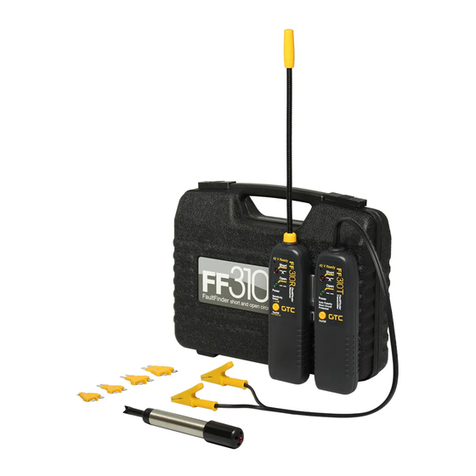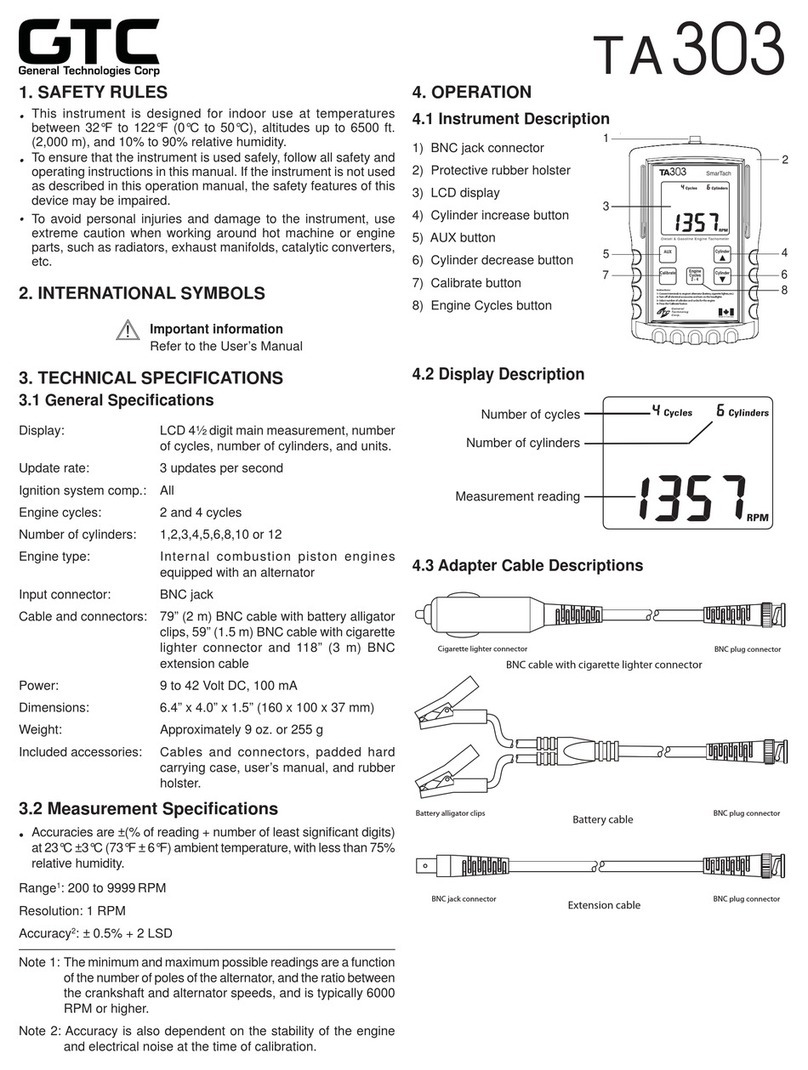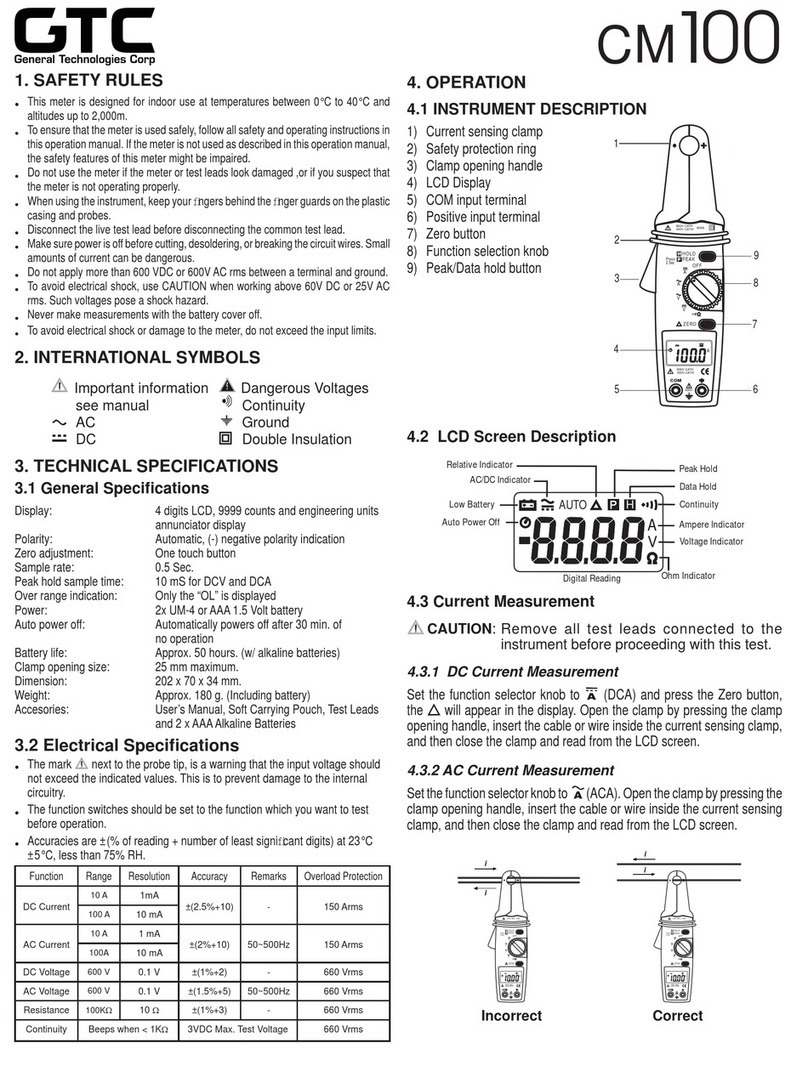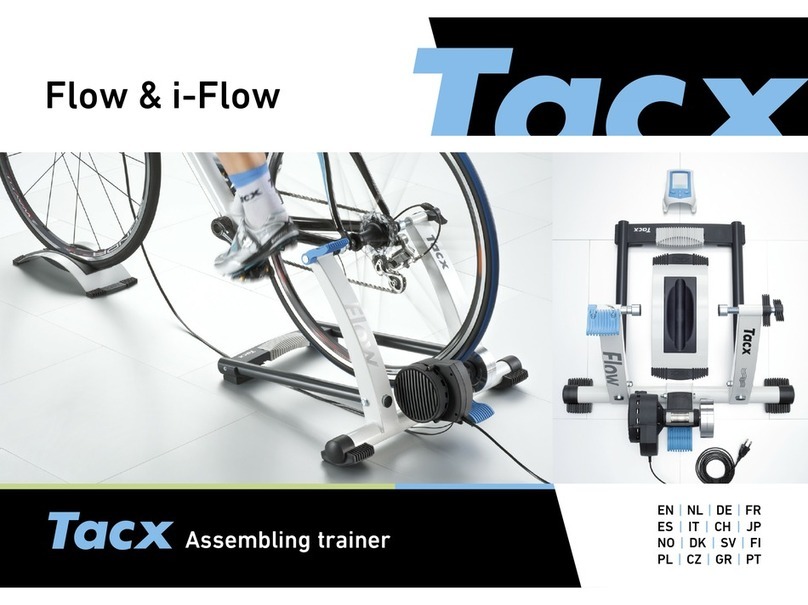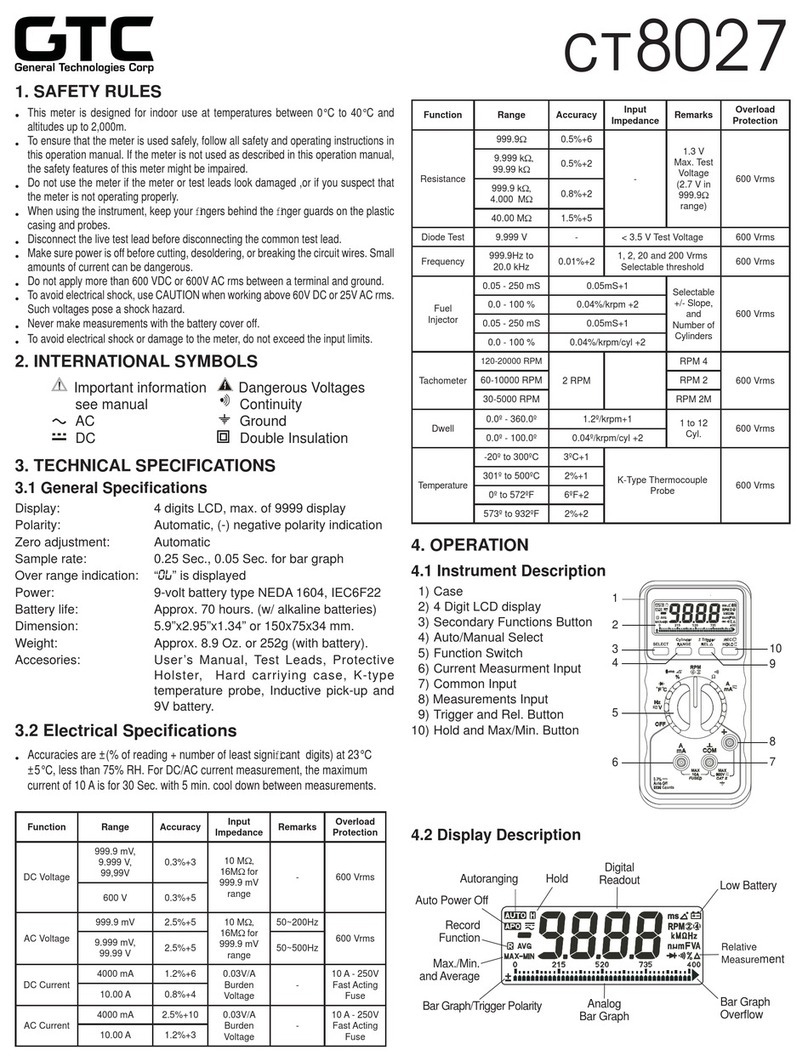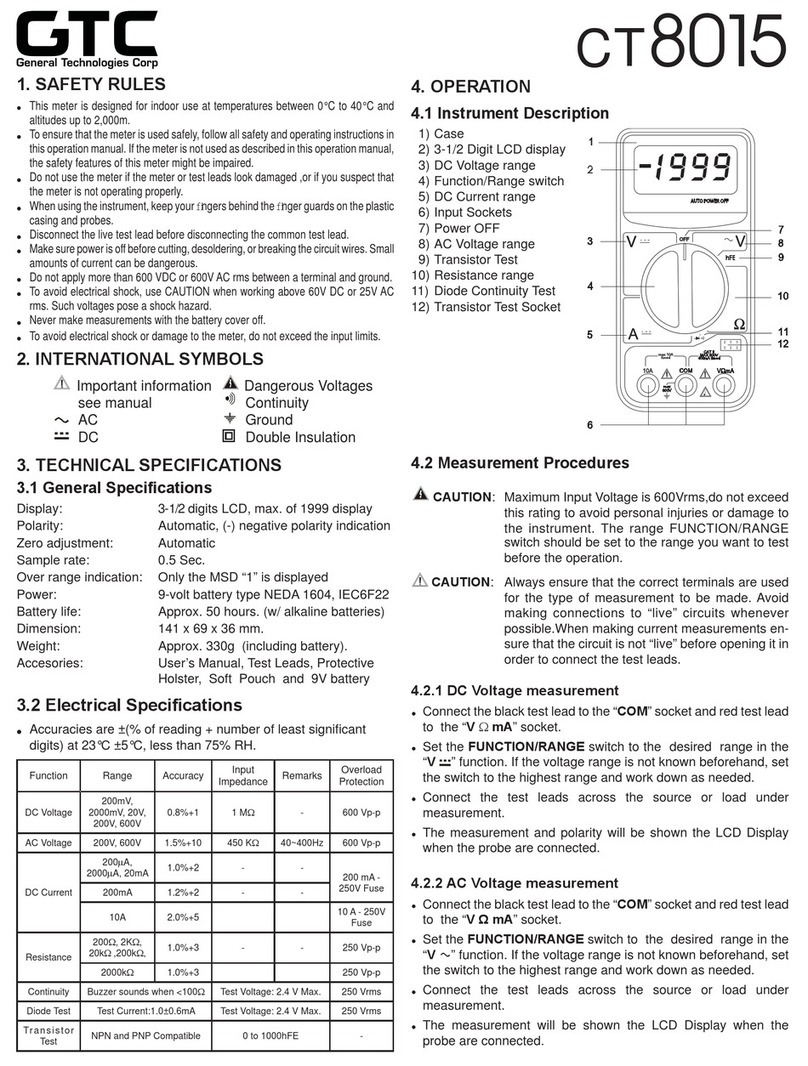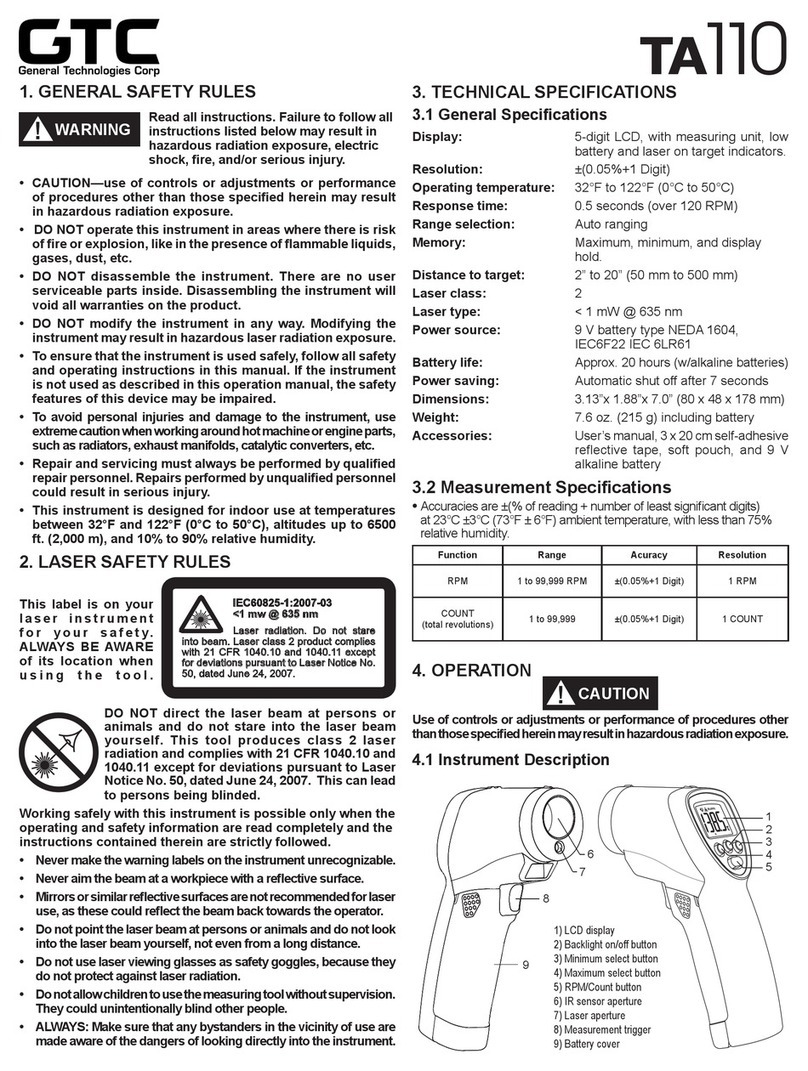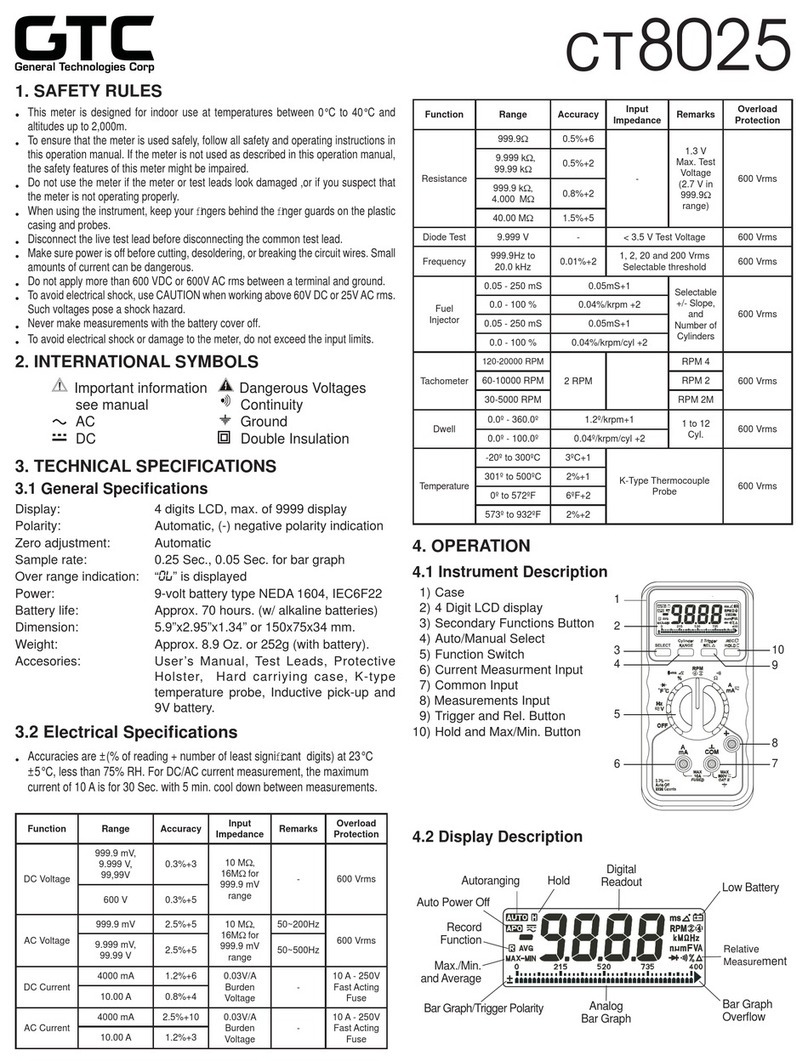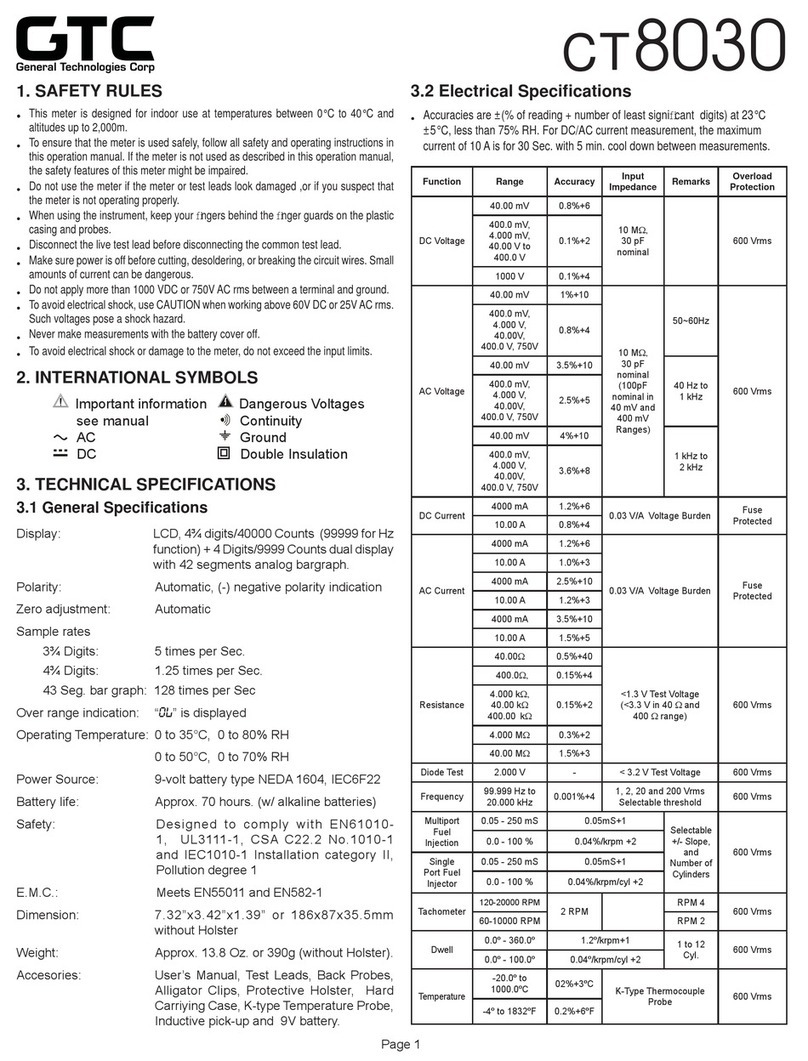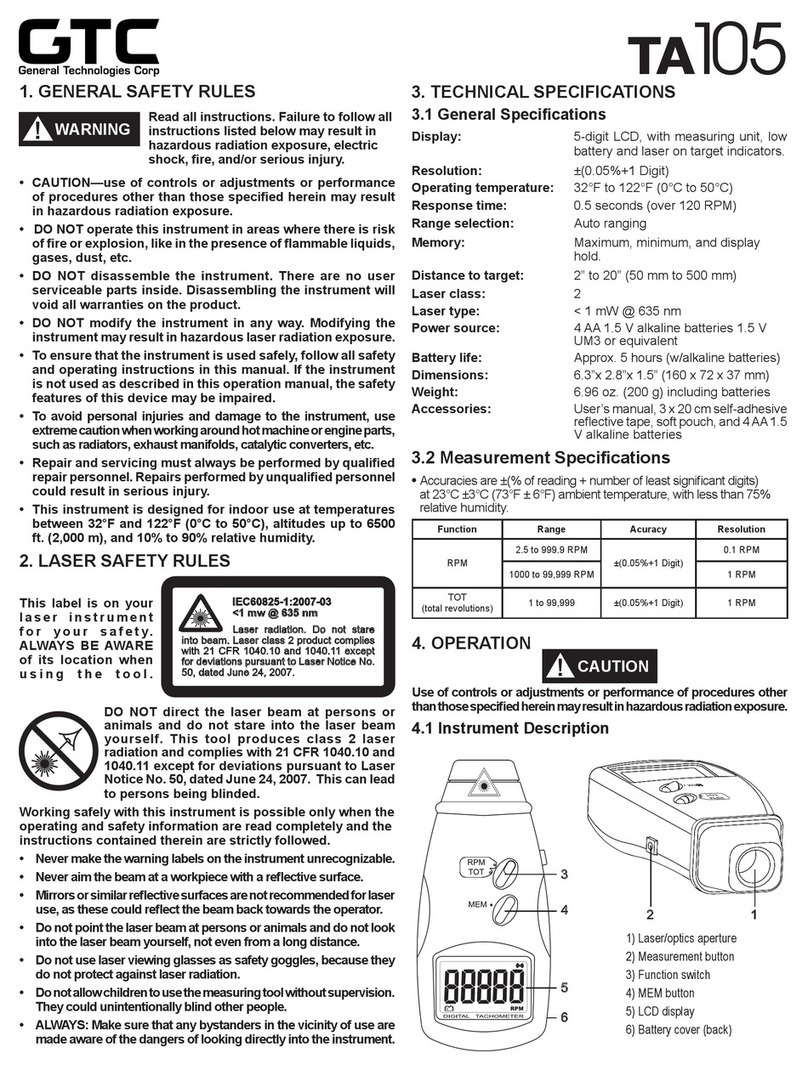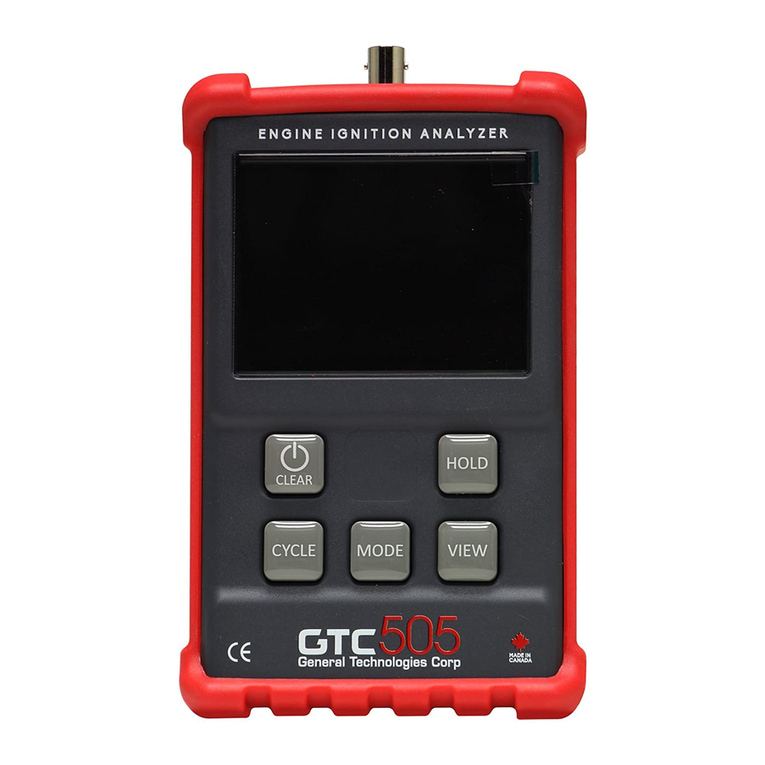
• Connect the test leads across the source or load under
measurement.
• The measurement will be shown in the LCD Display when the
probe are connected.
4.2.3 DC Current measurement
• Connect the black test lead to the “COM” socket and red test lead
to the “A” input connector. .
• Set the FUNCTION/RANGE switch to the “A ” function.
• Connect the test leads in series with the source or load under
measurement.
• The measurement and polarity of the current will be shown the
LCD Display when the current is flowing through the instrument.
4.2.4 Resistance measurement
CAUTION: Maximum Input Voltage for this function is 250 Vrms
forless than10 Sec.,do notexceed thisratingto avoid
personal injuries or damage to the instrument. Also
ensure there is no power applied to the component
or circuit and all capacitors are discharged.
• Connect the black test lead to the “COM” socket and red test lead
to the “V ” socket.
• Set the FUNCTION/RANGE switch to the desired range in the
“” function. If the resistancege range is not known beforehand,
set the switch to the highest range and work down as needed.
• Connect the test leads across the componet or circuit under
measurement.
• The measurement will be shown in the LCD Display when the
probe are connected.
4.2.5 Tach (RPM) Measurement
CAUTION: Maximum Input Voltage for this function is 250 Vrms
for less than 10 Sec., do not exceed this rating to
avoid personal injuries or damage to the instrument.
• Connect the black test lead to the “COM” socket and red test lead
to the “V ” socket.
• Set the FUNCTION/RANGE switch to the corresponding number
of cylinders of the engine to test in the “TACH” function.
• Connect the black test lead to to the vehicle ground or negative
(-) terminal of the battery, and the red test lead to the breaker
point of the distributor or negative (-) terminal of the ignition coil.
• The RPM will be shown in the LCD Display when the engine is
running.
4.2.6 Dwell Angle Measurement
CAUTION: Maximum Input Voltage for this function is 250 Vrms
for less than 10 Sec., do not exceed this rating to
avoid personal injuries or damage to the instrument.
• Connect the black test lead to the “COM” socket and red test lead
to the “V ” socket.
• Set the FUNCTION/RANGE switch to the corresponding number
of cylinders of the engine to test in the “Dwell” function.
• Connect the black test lead to to the vehicle ground or negative
(-) terminal of the battery, and the red test lead to the breaker
point of the distributor or negative (-) terminal of the ignition coil.
• The Dwell angle will be shown in the LCD Display when the
engine is running.
4.2.6 Temperature Measurement
• Set the FUNCTION/RANGE switch to the “TEMP” position.
• Connect the K-type thermocouple probe connector into the
Temperature socket observing the polarity of the connector and
socket.
• When the Function/Range switch is set to the “TEMP” position,
and no external thermocouple is connected, the meter will
automatically measure ambient temperature.
4.3 Other Functions
4.3.1 Diode/Continuity test
CAUTION: Maximum Input Voltage for this function is 250
Vrms for less than 10 Sec., do not exceed this
rating to avoid personal injuries or damage to the
instrument. Also ensure there is no power applied
to the diode.
• Connect the black test lead to the “COM” socket and red test lead
to the “V ” socket.
• Set the FUNCTION/RANGE switch to the “2000 ” within the
function.
• For diode testing proceed to connect the test leads across the
diode observing the polarity: red probe to the anode (+) of the
diode and black test lead to the cathode (-) .
• For continuity test proceed to connect the test leads across the
circuit or component, the buzzer will sound if the circuit resistance
is below 100.
5. MAINTENANCE
CAUTION: Before attempting battery removal or replacement,
disconnect test leads and remove the instrument
from any energized circuit to avoid shock hazard.
5.1 Battery Replacement
• Toreplacethebattery,remove thescrew ofthebackBattery Cover
(back of the case) and remove the battery.
• Replace with a new 9 V alkaline battery type NEDA 1604 or
IEC6F22 observing the proper polarity from the diagram on the
label inside the battery compartment.
• Reinstall the battery cover and tighten the securing screw.
5.2 Fuse replacement
• Remove the screw of the back Battery Cover (back of the case)
and remove the battery.
• Remove the screws at the bottom of the case and of the battery
compartment.
• Replace new fuse only with the identical type and rating.
F2=10A: Type IEC60127-2 orUL248-14 (6.3x25.4mm)
fast acting fuse, rated at 10A/250V.
• Reinstall the back cover, and replace the four screws,
• Reinstallthe battery observingthe polarity onthe battery compart-
ment label, the battery cover and tighten the securing screw.
5.3 Cleaning
Periodicallywipe the casewith asoft damp clothand mildhousehold
cleanser.Do notuse abrasivesor solvents.Ensure thatno watergets
inside the instrument to prevent possible shorts and damage.
6. WARRANTY
One year limited warranty, excluding batteries and fuses. For de-
tails see Standard Warranty Information in our webpage or request
a printed copy.
© Copyright 2017 General Technologies
General Technologies Corp.
#121 - 7350 72nd Street Tel.: (604) 952-6699
Delta, BC V4G 1H9 Fax: (604) 952-6690
Canada www.gtc.ca












